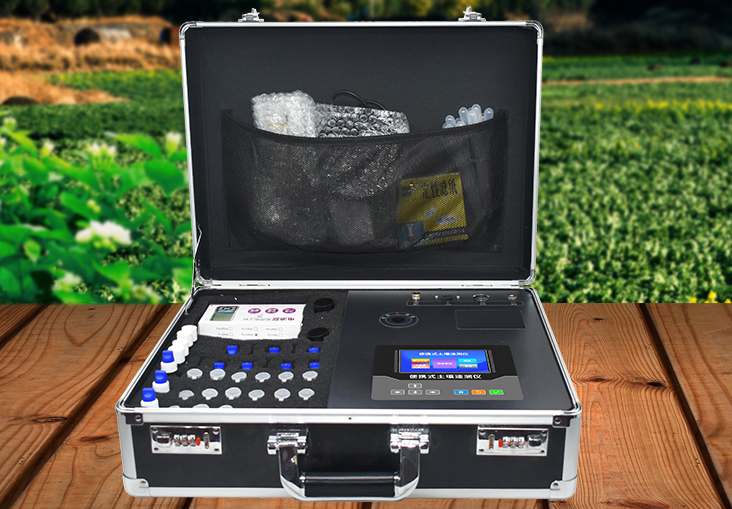Agriculture is undergoing a significant transformation with the rise of precision farming techniques. The integration of advanced technologies, such as soil sensor technology, is revolutionizing the way farmers understand and manage their land. This article explores the importance of soil sensor technology for precision farming, its working principles, benefits, and its potential to enhance agricultural productivity while minimizing environmental impact.

The Importance of Precision Farming:
Precision farming aims to optimize resource management in agriculture by providing farmers with accurate and localized information about their fields. This approach enables farmers to make data-driven decisions, leading to improved crop yields, reduced resource wastage, and increased sustainability. Soil sensor technology plays a vital role in providing crucial insights into soil conditions, helping farmers optimize irrigation, nutrient application, and overall land management practices.
Working Principles of Soil Sensors:
Soil sensors utilize various technologies to measure and analyze important soil parameters. These sensors are typically installed at different depths within the soil profile to capture data from multiple layers. The collected data is then analyzed to provide meaningful insights into soil moisture, temperature, electrical conductivity, pH levels, and nutrient availability.
a. Soil Moisture Sensors: Soil moisture sensors measure the water content in the soil. They can be based on capacitance, time-domain reflectometry (TDR), or frequency-domain reflectometry (FDR) principles. These sensors provide real-time information about soil moisture levels, allowing farmers to optimize irrigation schedules and prevent over or under-watering.
b. Soil Temperature Sensors: Soil temperature sensors measure the temperature at various depths within the soil profile. Temperature impacts seed germination, plant growth, and microbial activity. By monitoring soil temperature, farmers can optimize planting times, predict frost risks, and adjust crop management practices accordingly.
c. Soil Electrical Conductivity Sensors: Electrical conductivity sensors measure the soil’s ability to conduct electric current, which correlates with soil texture and salinity. These sensors help farmers identify areas with high or low fertility, enabling targeted soil amendments and precision fertilization.
d. Soil pH Sensors: Soil pH sensors measure the acidity or alkalinity of the soil. Different crops thrive within specific pH ranges, and soil pH influences nutrient availability. By monitoring soil pH, farmers can adjust soil amendments, such as lime or sulfur, to optimize nutrient uptake and crop productivity.
e. Soil Nutrient Sensors: Advanced soil nutrient sensors can measure the concentration of essential elements like nitrogen, phosphorus, and potassium within the soil. By understanding nutrient levels in real-time, farmers can apply fertilizers precisely, minimizing waste and optimizing plant nutrition.
Benefits of Soil Sensor Technology for Precision Farming: a. Improved Resource Management: Soil sensor technology enables precise irrigation scheduling, reducing water consumption and energy costs. It also helps farmers optimize fertilizer usage, minimizing nutrient runoff and environmental pollution.
b. Enhanced Crop Yield and Quality: By accurately monitoring soil conditions, farmers can provide optimal growing environments for crops. This leads to improved yields, better crop quality, and increased profitability.
c. Early Pest and Disease Detection:
Soil sensors can detect changes in electrical conductivity or other parameters that indicate the presence of pests or diseases in the soil. Early detection enables proactive pest management strategies, reducing crop damage and yield losses.
d. Data-Driven Decision Making:
Soil sensor technology provides farmers with real-time and historical data about their fields. This data helps them make informed decisions related to planting, irrigation, fertilization, and overall farm management practices.

e. Environmental Sustainability: Precision farming techniques, enabled by soil sensor technology, promote sustainable agricultural practices. By optimizing resource usage, minimizing chemical inputs, and reducing environmental impact, farmers can contribute to a more sustainable food production system.
Integration with Precision Agriculture Systems:
Soil sensors can be integrated into larger precision agriculture systems, combining data from multiple sources such as weather stations, satellite imagery, and machinery sensors. Integrated systems utilize advanced algorithms and cloud-based platforms to analyze and visualize the data, providing farmers with comprehensive insights and recommendations for optimal land management.
Challenges and Future Developments:
a. Cost: The initial investment in soil sensor technology can be a barrier for some farmers. However, as technology advances and
